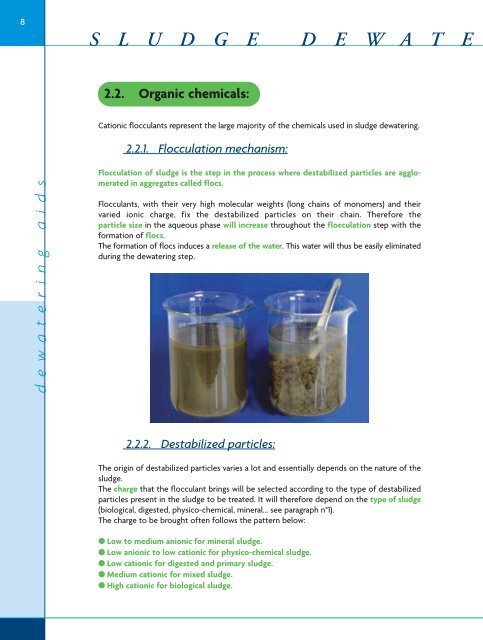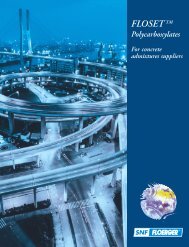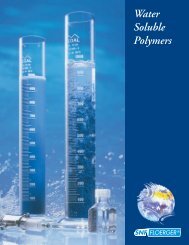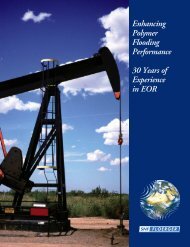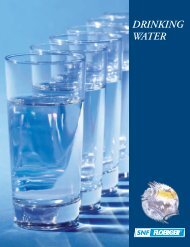SLUDGE DEWATERING - SNF Group
SLUDGE DEWATERING - SNF Group
SLUDGE DEWATERING - SNF Group
You also want an ePaper? Increase the reach of your titles
YUMPU automatically turns print PDFs into web optimized ePapers that Google loves.
8<br />
d e w a t e r i n g a i d s<br />
S L U D G E D E W A T E<br />
2.2. Organic chemicals:<br />
Cationic flocculants represent the large majority of the chemicals used in sludge dewatering.<br />
2.2.1. Flocculation mechanism:<br />
Flocculation of sludge is the step in the process where destabilized particles are agglomerated<br />
in aggregates called flocs.<br />
Flocculants, with their very high molecular weights (long chains of monomers) and their<br />
varied ionic charge, fix the destabilized particles on their chain. Therefore the<br />
particle size in the aqueous phase will increase throughout the flocculation step with the<br />
formation of flocs.<br />
The formation of flocs induces a release of the water. This water will thus be easily eliminated<br />
during the dewatering step.<br />
2.2.2. Destabilized particles:<br />
The origin of destabilized particles varies a lot and essentially depends on the nature of the<br />
sludge.<br />
The charge that the flocculant brings will be selected according to the type of destabilized<br />
particles present in the sludge to be treated. It will therefore depend on the type of sludge<br />
(biological, digested, physico-chemical, mineral… see paragraph n°1).<br />
The charge to be brought often follows the pattern below:<br />
● Low to medium anionic for mineral sludge.<br />
● Low anionic to low cationic for physico-chemical sludge.<br />
● Low cationic for digested and primary sludge.<br />
● Medium cationic for mixed sludge.<br />
● High cationic for biological sludge.


